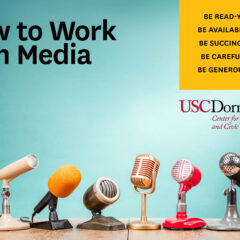CRCC researchers went to Seoul, South Korea for a conference on Religious Competition and Creative Innovation. Seoul serves as a comparison city to Los Angeles for the CRCC project, and the Seoul team invited scholars from around the world to discuss the central theme.
When are we NOT in time of flux? – @richardflory introducing ideas of change & #innovation in #religion
— USC Center for Religion and Civic Culture (@usccrcc) August 25, 2016
We summarized the research presented at the conference on instagram, along with photos of the researchers. You can find them all by following us @USCCRCC.
Sung Gun Kim leads the Seoul RCCI team and has been studying four megachurches in Seoul, considered the megachurch capital of the world:
The RCCI project is also studying the faith lives of young adults in Seoul. Click here to read more about how young religiously unaffiliated Koreans and Americans compare.
Another case study from the RCCI project looks at Filipino Catholic migrants living in Seoul. A guest scholar presented about Chinese immigration to France.
Faith-based social services was also a theme of the conference, with two presentation on two different contexts:
The conference also included scholars studying how religion is changing in Latin America, Indonesia and Hong Kong.
Last but not least…
Click here to read more about the Los Angeles research team’s findings.
The Religious Competition and Creative Innovation project was made possible through the support of a grant from the John Templeton Foundation. The opinions expressed do not necessarily reflect the views of the John Templeton Foundation.




